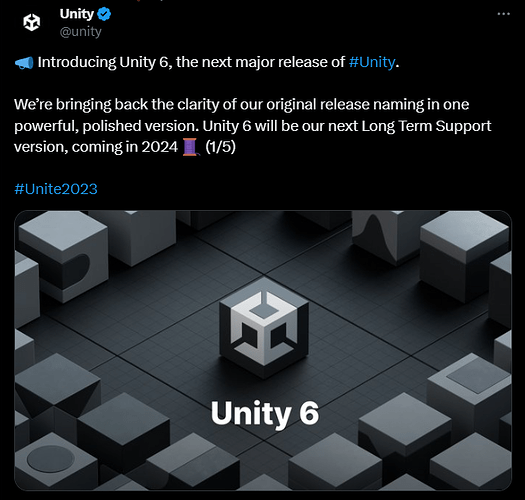Unity has unveiled the latest iteration of its game development engine, Unity 6. This version introduces updated workflows designed for online multiplayer game creation, along with enhanced tools specifically for mobile projects, including mobile web support for Android and iOS browsers. The engine boasts significant performance improvements, especially in graphics rendering, and includes new features for creating more realistic environments with global lighting and advanced visual effects. As expected, there’s also an AI upgrade.
The company took a real hit to its public perception when it attempted to revise its pricing structure last September. The proposed payment model would charge devs a fee whenever a player downloaded their creation.
Unity mounts a comeback with launch of Unity 6 game engine (engadget.com)

Unity’s release of Unity 6 marks a significant step forward for game developers, especially after the company’s pricing fiasco in 2023. The new engine version introduces enhancements that improve performance, rendering, and multiplayer capabilities. Here are the key highlights:
1. Boost in Rendering Performance
Unity 6 comes with several performance improvements, particularly in its rendering pipelines (URP and HDRP). Tools like GPU Resident Drawer and GPU Occlusion Culling are designed to optimize performance across platforms, while the Spatial Temporal Post-Processing (STP) feature ensures high-quality visuals by upscaling lower-resolution frames. This makes it possible for developers to create more detailed and immersive game worlds without compromising performance.
2. Simplifying Multiplayer Game Development
The updated Multiplayer Center integrates all necessary tools and services, making it easier for developers to implement multiplayer features. Preassembled UI widgets like lobby creation and voice chat provide ready-to-use multiplayer elements, and features such as Multiplayer Play Mode streamline gameplay validation. New latency solutions like Distributed Authority (Beta) help maintain seamless gameplay even in client-hosted games.
3. Expanded Multiplatform Reach
Unity 6 enhances web and mobile web support, now allowing projects to run directly on Android and iOS browsers. It also supports Web Assembly SIMD and C/C++ multithreading, increasing CPU performance. The web’s memory limit has been doubled, allowing for more complex and resource-intensive projects. Developers can even embed Unity projects within native mobile apps, bringing more flexibility for mobile gaming.
4. Improved Visual Fidelity
The graphics capabilities in Unity 6 push the limits of realism. Advanced lighting effects, Adaptive Probe Volumes, and improvements in Volumetric Fog Output provide the tools for developers to create visually stunning environments. The enhanced Ray Tracing API is another standout, enabling realistic lighting and shading effects for high-end platforms like Xbox Series X|S and PlayStation 5.
5. AI and Sentis Integration
Unity 6 integrates its Sentis AI library, allowing developers to incorporate AI-driven mechanics directly into games. This includes more interactive gameplay experiences and smarter NPCs. The engine supports both custom-trained AI models and open-source models, streamlining the use of advanced AI technologies.
6. Tools for Productivity
The update introduces new profiling tools to help developers optimize their games more effectively. The Profiler Highlights module and enhanced Memory Profiler offer detailed insights into both CPU and GPU usage. Additionally, the UI Toolkit improvements speed up the creation of custom UI elements, making UI development more intuitive.
Read More: Tekken 8 Devs Respond to Backlash with Apologies, $5 In-Game Credit, and Promises for Change
With these advancements, Unity 6 positions itself as a powerful tool for developers across all platforms, addressing performance, scalability, and visual quality. The elimination of the controversial runtime fee will likely help rebuild trust within the developer community, especially among indie game creators.
To sum it up, Unity 6 isn’t just about adding more tools – it’s about empowering developers to push creative boundaries with less effort and more flexibility. Whether you’re building the next hit multiplayer game, a mobile experience, or diving into immersive environments, Unity 6 provides the performance boosts and AI integration to keep you ahead of the curve. It’s clear that Unity is focused on not only meeting the demands of today’s creators but also setting the stage for the future of interactive experiences.

